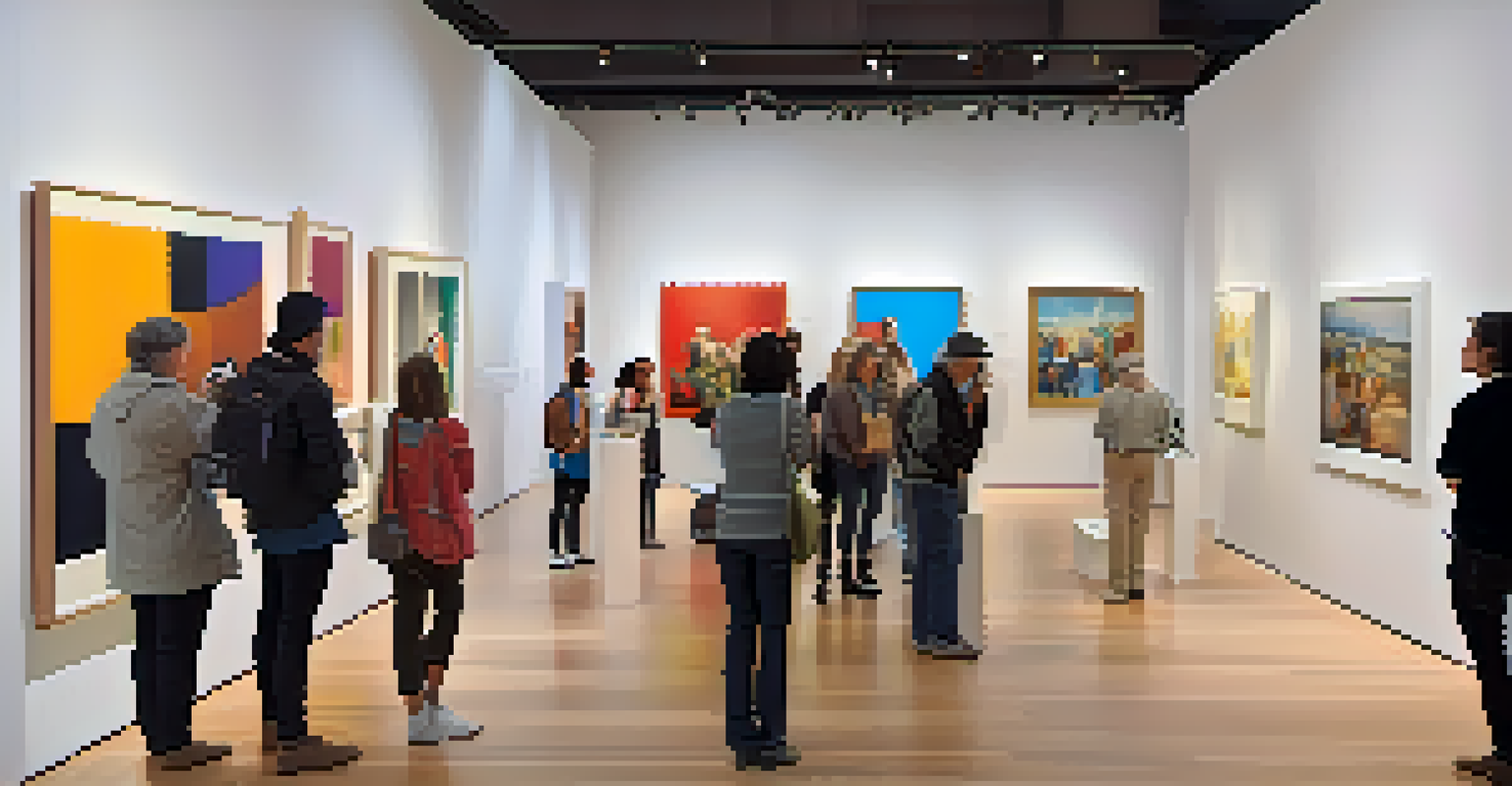The Relationship Between Art Critics and Art Collectors

Understanding the Role of Art Critics
Art critics serve as the voice of the art world, providing valuable insights and evaluations of artworks. They analyze not just the aesthetic qualities but also the context and implications of the pieces they review. Their assessments can influence public perception and, in many cases, the market value of artworks.
Art is not freedom from discipline, but disciplined freedom.
By articulating their thoughts, critics help to demystify art for collectors and the general public alike. They bridge the gap between the artist's intent and the audience's experience, making art more accessible. This role is crucial, especially in a world where art can sometimes feel exclusive or elitist.
However, it's essential to remember that critics are also subjective in their views. Each critic brings their own tastes, biases, and experiences to their evaluations, which can lead to varied interpretations of the same piece. This subjectivity is what makes art criticism both fascinating and complex.
The Perspective of Art Collectors
Art collectors are driven by a mix of passion, investment, and personal taste. For many, collecting art is not just about owning pieces but also about understanding and engaging with the art itself. Collectors often look to critics for guidance on what to buy and what may be worth investing in.

Their relationship with critics can be symbiotic; while critics provide insights, collectors can offer feedback based on market trends and public reception. This dynamic can sometimes lead critics to adjust their perspectives based on the collector's experiences and preferences. Ultimately, collectors are looking for value—both emotional and financial.
Critics Shape Art Perception
Art critics provide insights that help demystify artworks, influencing public perception and market value.
Moreover, collectors often seek out the opinions of critics to validate their choices or discover emerging artists. This intertwining of opinions can shape the art market, as a glowing review from a respected critic can propel a lesser-known artist into the spotlight. Hence, collectors and critics play pivotal roles in each other's journeys.
The Influence of Art Criticism on Collecting Trends
Art criticism can significantly impact the trends within the collecting community. When a critic praises a particular artist or movement, it can lead to a surge in interest and demand for that artist's work. This phenomenon is often observed during major exhibitions or art fairs, where critics' reviews can sway collectors' purchasing decisions.
Criticism, as it were, is the art of the possible.
For instance, if a critic highlights an up-and-coming artist, collectors may rush to acquire pieces before they become too expensive. This creates a ripple effect, where the critic's words can help shape market dynamics and influence the value of artworks. Thus, collectors often keep a close eye on critical reviews.
Additionally, trends can shift quickly based on critical reception, making the relationship between critics and collectors quite dynamic. Collectors who stay informed about critical opinions can make more educated decisions, ultimately enhancing their collections. This interplay showcases how art criticism is not just about opinions but also about the business of art.
The Challenges Faced by Art Critics
Art critics often navigate a challenging landscape, balancing their personal opinions with the expectations of collectors and the art community. They must remain authentic in their assessments while considering how their words may impact an artist's career or a collector's investment. This balancing act requires a deep understanding of both art and market dynamics.
Moreover, critics can face backlash for their reviews, particularly if they challenge the status quo or critique widely celebrated works. This pressure can lead to self-censorship, where critics may hesitate to voice their true opinions. However, this also highlights the importance of having diverse voices in art criticism to foster healthy discourse.
Collectors Value Critic Insights
Art collectors often rely on critics to guide their purchasing decisions, validating their choices and shaping market trends.
Ultimately, the challenges faced by critics underscore the complexity of their role. They must not only convey their insights thoughtfully but also navigate the expectations of both artists and collectors. This intricate dance adds another layer to the relationship between critics and the art community.
The Role of Social Media in Art Criticism
In today’s digital age, social media has transformed the landscape of art criticism. Critics now have platforms to share their insights instantly, reaching a broader audience than ever before. This immediacy can amplify their influence, as collectors and enthusiasts can engage with their reviews in real-time.
However, while social media offers a space for diverse opinions, it can also lead to misinformation or superficial critiques. The fast-paced nature of online platforms may discourage in-depth analysis, which is essential for understanding complex artworks. Critics must adapt to this environment while maintaining the integrity of their evaluations.
Furthermore, social media allows collectors to showcase their collections and share their experiences. This interaction creates a dialogue between collectors and critics, fostering a community around art appreciation. As critics and collectors engage in conversations online, they can shape trends and influence one another in unique ways.
Emerging Artists and the Critic-Collector Relationship
Emerging artists often rely heavily on the support of both critics and collectors to gain visibility in the art world. A favorable review from a respected critic can attract the attention of collectors, leading to sales and further opportunities. This relationship is crucial for artists trying to establish themselves in a competitive landscape.
Critics play a vital role in identifying and promoting new talent, often acting as the first champions of an artist's work. Their recommendations can provide a legitimacy that emerging artists desperately need. This endorsement can help them break into galleries and exhibitions, which is often a significant hurdle for new artists.
Social Media's Impact on Criticism
Social media has transformed art criticism, allowing for immediate sharing of insights while also presenting challenges in maintaining depth and accuracy.
For collectors, discovering emerging artists can be exciting and rewarding, as it offers the chance to invest in the next big names in the art world. By following critics' advice, collectors can build collections that not only reflect their tastes but also hold potential future value. This mutual interest creates a vibrant ecosystem for both critics and collectors.
The Future of Art Criticism and Collecting
As the art world continues to evolve, so too does the relationship between critics and collectors. With the rise of digital platforms, the ways in which art is critiqued and collected are changing rapidly. Critics are finding new avenues to share their insights, while collectors are increasingly turning to online resources for guidance and inspiration.
This shift may lead to more democratized art criticism, where diverse voices can emerge, and collectors can engage more directly with critics. As the barriers between art professionals and the public continue to blur, the art community can become more inclusive and vibrant. This evolution is essential for fostering creativity and innovation in the art world.

Looking ahead, it's crucial for both critics and collectors to adapt to these changes while remaining committed to their passions. By embracing new technologies and perspectives, they can continue to enrich the art ecosystem. Ultimately, the future of art criticism and collecting will hinge on collaboration, communication, and a shared love for art.